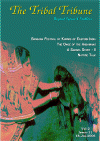Nature Talk
|
Concern for tribals have over the years found various expressions and it has a long history on the soil of Orissa, where tribal population is about 23% of the State population. But the one which appears unique is the concern of the women, who chose almost half a century ago, to live with the tribals in extremely difficult conditions in the inaccessible areas of the interior districts of Orissa. Their source of inspiration and guide was Srimati Malati Chaudhury (affectionately addressed as Numa), an extraordinary woman in whom every ordinary person could find solace, security and meaning of living. Srimati Sabita Sahu, who in early sixties was deputed by Malati Devi to work in the tribal stretches of Ganjam district, recalls, "Like legendary Hanuman entering into Lanka backed by his devotion to Lord Ramachandra and Lord’s power, we two devotees of Numa backed by her strength entered Sialilati. There was no road. We reached the village through the jungle. Nobody in the village offered us a house to stay. We stayed in a shed meant for goats. We slept on a wooden plank and the goats were sleeping under it. We cooked our food in open. In the verandah, we held classes for village lads. We with the help of nearby villagers built a hut to house our centre.***** Numa, on learning it, walked 12 KMs from Mahendragarh to Sialilati. She convened a meeting of village women and explained them the objective of our stay in their village. She thus said to the village women, ‘ my two daughters are staying in your village. They will teach your children, nurse the patients, serve as midwives. They will also be with you in your fight against injustice and exploitation.’ Numa came back. We began nursing patients, teaching young and adults, doing village sanitation work, midwifery, spreading prohibition and creating a village cooperative fund. ***** The movements were organised against cow slaughter, against exploitation by the moneylenders and by the police, against forced unpaid labour (Bethi) etc. The landless were given land from the village co-operative. Village roads were laid with the help of women of the village". Srimati Sabita Sahu is still working amongst the tribals in the same area of Sialilati. Also one finds seventy year old Srimati Dhobendri Mohapatra, another acolyte of Numa, to be working with the tribals of Belghar, in Kondhamala district of Orissa, the place which Numa visited for the first time in 1959-60. Srimati Sitabala Tudu, a Santali girl from Midnapore of West Bengal, who joined Numa in 1955 and worked amongst Saura tribals of Baghmari of Gajapati district in Orissa, is no more. She died on 22nd February 2005 after a prolonged illness but refused all offers of treatment that required her to leave her place of work and people there of. So much she was in love with the people she worked with!
These women are first rate examples of a unique endeavour, made by Numa in the early fifties, that relied on the instinctive feminine concern and aggressiveness towards protecting one’s offspring as well as on the confidence that a woman can be oriented to extend it to a larger humanity. These women, however, with their sense of dedication, boldness and sacrifice could attract many women to work with the tribals under an overall supervision of Numa.
Now the tribal stretches are besotted with NGOs, which receive aid from various national and international agencies. These NGOs have women workers too. One wonders, if the sense of dedication, sacrifice and painstaking ability that Numa’s acolytes displayed can be expected of these women workers of NGOs, particularly when social service has become a profession with attractive salary and perks. With professional social work on rise, it is not surprising that the class of Sabita Sahu, Dhobendri Mohapatra and Sitabla Tudu is fast shrinking and Numa’s experiment of invoking concern for tribals amongst the ordinary women is fast fading from people’s memory. Every one concerned with the tribals’ fate realises that this should not happen because woes of the tribals are hardly over. They are under constant threat of extinction physically as well as culturally notwithstanding provisions of law piling up with loud claims to protect their interest. With various manifestations of the concern for them, the concern women displayed with their involvement in the tribal society under the tutelage of Numa, one wishes, should have expanded over the years. May be we have to wait for another Numa to arrive to inculcate that kind of spirit that Numa had infused in Sabita Sahu, Dhobendri Mohapatra and Sitabala Tudu. We in this birth anniversary month of Numa salute her and all her acolytes. |
Photographs :
References :



